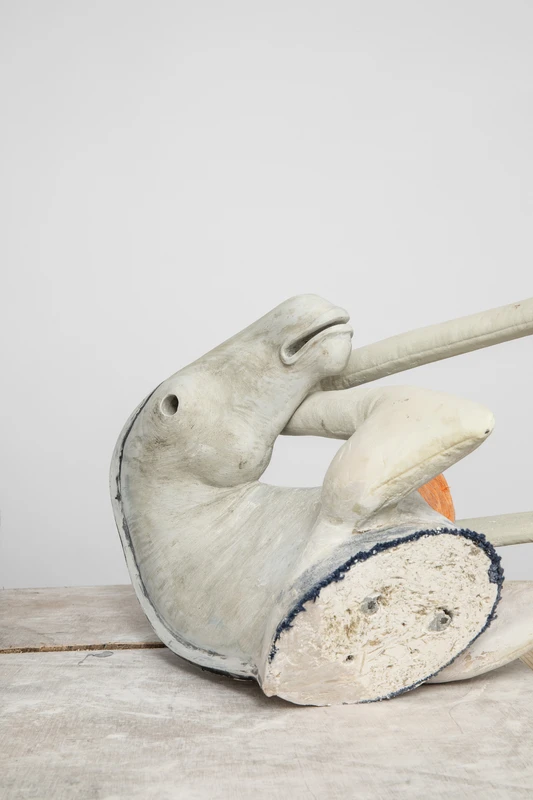Cathie Pilkington: Weird Horses
21 Apr-27 May 2023


Weird Horses is an exhibition that proposes a return to equestrian sculpture. Here as elsewhere, Cathie Pilkington is characteristically drawn to engage with motifs that seem exhausted and overburdened by history, testing out what meanings and relevance they can have today. The image of the horse is a loaded one, rooted deep in the sculptural canon, a relic of past ideas, myths and empires. Pilkington’s installations have been referred to as a form of ‘art historical fly-tipping’, a description apt for the current show. The serial arrangement of the horses is reminiscent of the Parthenon Marbles and perhaps also recalls the classical horses of St Mark’s Basilica in Venice.
Although animals have long featured in Pilkington’s repertoire, this exhibition particularly signals a conscious move away from the politics of the figure, in a problematic search for something pre-linguistic, even irrational. The making process adopted for the realisation of these part-forms is a kind of birthing, open to unforeseen results – it’s messy and involves pouring, stuffing, containing, then assembling. This method of formal invention from intensively made parts recalls the impossible anatomies of Pilkington’s more familiar doll-like objects of recent years.
The new work is characterised by a restrained formality, a latent classicism, instead of the sprawling excess and visual complexity foregrounded in the artist’s previous installations. There is a sensual and awkward animation at work in Pilkington’s Weird Horses as they curl, twist and stutter into being, silhouetted against the gallery’s windows.
The central work in the exhibition, titled On the Table, is a huge workbench filled with sculpture. The only colour present in the work is formed by the muted tones of the brute material of its making – plaster, cloth, wood, car filler. Instead of the carefully painted surfaces we usually find in Pilkington’s sculptural objects, it is as if the work is still in progress. With the sculpture seemingly left halfway, the viewer is left to wonder: are these objects being made, repaired or falling apart? The process of traditional sculpture is on the table, both literally and figuratively.
Despite the decisive, formal clarity Pilkington is exercising in this show, the familiar restless shifting of cultural registers remains central in the work: tensions between domestic and studio space, the gallery and the museum, storage and display. These high and low cultural references become metaphors for deeper psychologies, alluded to by a trashed pile of discarded limbs, tiny flashes of glitter curtain, and a fluorescent beach ball mixed in with studio detritus and unfinished projects and body parts on the bottom shelf of the workbench.
In the back room of the gallery, the viewer is surrounded by a sequence of 12 small paintings, titled Abnormal Presentation (Rainbow Room), whose imagery is drawn from diagrams explaining problems in foaling. These works form a contemplative sequence of the unborn, a meditation on the beginning of things. There is a sense of becoming here. Forming a sequential colour spectrum, the layers of paint give the images a murkiness, muting the luminous colour and accentuating the uncanny imagery of a foetus growing in a dark, constricted space.
Pilkington’s unborn foals know what they are, growing their impossible, irrational anatomies, but they are not yet in the world. Located somewhere between the classical and the unconscious, Weird Horses is a dialectical mash-up of empires and civilizations, sex and death, birth and rebirth, girls, ponies and rainbows.